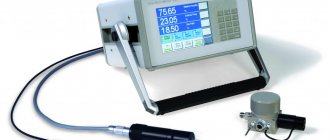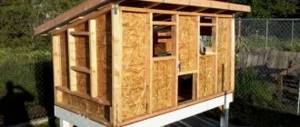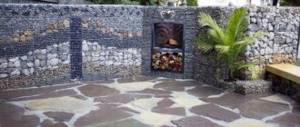A weather vane is a meteorological instrument used to determine the direction of the wind, as well as its speed and strength. It is a metal flag with a counterweight at the other end. Rotating around its axis, the device rotates under the influence of wind. The compass rose is installed on the same axis.
Of course, wind parameters nowadays are measured with special electronic devices, so an ordinary weather vane is often used as a decorative detail on the roof of a house.
From the history of the weather vane
No one can accurately guess when people began to use weather vanes. The oldest one at the moment can be considered a weather vane, made by a Greek astronomer a little over 2000 years ago. It crowned the Tower of the Winds in ancient Athens and also had a symbolic meaning.
Weathervanes were very popular in the Baltic and Scandinavian countries. In coastal port cities, it was necessary to determine whether the wind would allow a ship to dock. To this day, they decorate the roofs of buildings, striking with their variety of shapes and, at times, being real works of art, but only as decoration.
Sketches of weather vanes for the roof
Now ready-made weather vanes are sold in special stores , but if you wish, you can make an individual order for the manufacture of the design.
Before installing a weather vane on the roof, the home owner needs to select a suitable figure according to the sketches provided by the manufacturer, or make such a drawing yourself.
Note that all modern weathervanes are divided into two types :
- Regular figures with a wind direction indicator;
- More complex designs , in which, in addition to the wind flow direction indicator, there is also a device that tells about the wind speed. Also, complex designs of weather vanes can be equipped with special propellers that scare away birds from the chimney.
The dimensions of the weather vane are selected in accordance with the parameters of the house. This decorative element should not be too bulky , but at the same time it should be visible on the roof.
Sketches of weather vanes for the roof should reflect the main structural elements of the product (an animal figurine, weather vane indicator, support rod for the figurine and arrow, wind roses).
Types of weather vanes
According to their functional significance, weather vanes are divided into the following types:
- Meteorological instruments. Precisely balanced wind vanes that measure wind direction. This also includes Wild weather vanes, which allow you to determine wind speed. The design of the latter includes a propeller or plate that swings under the influence of air currents. The propeller also serves to scare away birds;
- Chimney weather vanes. Protect the chimney from wind blowing, preventing smoke;
- Decorative weather vanes. Artfully crafted weather vanes are commonly used to decorate a home and add personality to a home, adding a unique flair. Mostly they are figurines of animals, mythical creatures or birds, but there are also very original ones, reflecting the tastes of the home owners.
Often all of the above types are contained in one device.
Types of weather vanes by purpose
There are several types of weather vanes according to their functional purpose:
- Meteorological devices are high-precision instruments that are qualitatively balanced. Such devices are called anemorummeters and are installed at meteorological stations.
- Vilde wind vanes are designed to measure wind force. A special feature of their design is the presence of a vertical metal plate that swings from side to side. The deviation of such a plate from the vertical position demonstrates the intensity with which the wind flows move. Sometimes, instead of such a plate, a propeller is used, which can also scare away birds.
- Decorative weather vanes are not precise. They serve to decorate the roof. As a rule, such a weather vane is made in the form of a stylized animal or symbol, the figure of which indicates the direction of the wind.
- Chimney weather vanes protect against air blowing into the chimney and ensure unimpeded exit of smoke from the chimney even during strong winds.
Most often, all types of weather vane designs are combined in one device, but it is worth considering chimney models separately.
Symbolism of weather vanes
Over the past centuries, the weather vane has become the subject of legends and served not only as a decoration for the building, but also as a kind of amulet. According to the Eastern teachings of Feng Shui, a weather vane helps to establish warm, friendly relations with neighbors.
The most popular are weather vanes with the image of a rooster, especially in Russia. The rooster symbolizes vigilance. In folk legends, he could scare away evil spirits, protect the home from fires and other disasters. In Christianity, the rooster is considered a symbol of St. Apostle Peter.
In Asian countries, weathervanes in the form of dragons are often found. The dragon personifies wisdom, and a weather vane with its image also serves as a talisman.
When choosing a weather vane figurine for your home, it would not be superfluous to ask what this or that image means. For example: a cat serves as a symbol of home comfort, an eagle is designed to protect from enemies, a lion represents strength and power, a ship represents determination, a stork represents a family hearth.
It is not necessary to strictly adhere to any canons. You can choose the figure you like. If you wish, it is not at all difficult to make a weather vane with your own hands.
Figures for weather vanes and their interpretation
Before purchasing or before manufacturing, you should definitely decide on the design and model of the weather vane. A weather vane can serve several purposes other than practical; it can be a symbol of something or simply a decorative element.
Below we offer simple, but at the same time beautiful and original sketches with an interpretation of their meaning, which can serve as a basic basis for self-production.
If you are interested in history, are interested in weapons, or served in a glorious artillery regiment, then a weather vane with a cannon would be an excellent choice.
Since ancient times, models with figures of various animals and birds were popular in Rus'. This tradition dates back to pagan times, when some animals were attributed the qualities of amulets and talismans.
For example, the image of a bear meant strength and health; it was believed that this way the house was protected from any illness, and the figure of a horse was a symbol of fertility and good luck in sowing.
And of course, the most popular image is the rooster. Seeing him, I immediately remember Pushkin and his “The Tale of the Golden Cockerel,” where the rooster acted as a vigilant guard and warned the owner about troubles.
If you like to be a leader, then what could be better than the king of all animals - the mighty lion?
For lovers of Asian culture, the mighty mythical beast dragon is a must-see. It is believed that it brings not only wisdom, but longevity to its owner.
Do you have a desire to travel and a passion for the sea in your soul? Choose a fast ship, because it symbolizes the desire for freedom and new discoveries.
But the image of a cat is as ambiguous as the domestic animal itself. On the one hand, this is a love of independence, and on the other, a desire for comfort and tranquility.
Of course, it is not at all necessary to put some deep and sacred meaning into a weather vane; it can simply be an excellent decoration for your home.
Materials for making a weather vane
To create a weather vane, it is preferable to use metal: sheet steel or copper. This design will last a very long time without losing its attractiveness or deteriorating from environmental influences. Forged products look very impressive.
Wood and plywood structures also work, but they suffer from precipitation and temperature changes. To extend their service life, they are coated with a special compound and varnish.
Quite often lately plastic has been used to make weather vanes. It is lightweight, non-corrosive and impervious to precipitation. But his life is relatively short.
The simplest weather vane can be made from plastic bottles or CDs. Of course, such a device can decorate a modest garden house, greenhouse or shed, but not a reputable cottage.
Materials
Now it’s clear to you how to make a weather vane with your own hands, but the question remains about what the product can be made from. As a rule, copper or steel is preferred. At the same time, the outside of the finished device is coated with paint. It is rare to find forged products. But in fact, you can make a weather vane from scrap materials.
So, the materials can be CDs, plastic bottles, tin and moisture-resistant plywood. If you prefer wood, it is worth remembering that when connecting parts you do not need to fasten them tightly. Otherwise, the dynamics will be disrupted.
Main parts of a weather vane
The weather vane design includes:
- bearing axle;
- flag with counterweight;
- frame;
- a cap that protects the housing from water;
- compass rose showing the 4 cardinal directions
Weathervane drawing
Before you make a weather vane with your own hands, you need to select or carefully draw up a drawing of the weather vane. This will help avoid errors and inaccuracies in the design.
The weather vane can be any size; there are no strict rules. But basically they stick to the size 70 x 40 cm (for a cottage).
What is a weather vane?
Being a spectacular decoration, a weather vane remains primarily a meteorological indicator. By turning towards the wind, it can additionally measure its speed. If you install a weather vane on the chimney , the device will increase the air draft in it. This eliminates smoke and eliminates the possibility of precipitation getting into the pipe.
Historically, a weather vane is made from metal . Wood and polymer materials provide less measurement accuracy. However, if the hero of the article is entrusted with a purely decorative mission, you can even make the device from CDs.
The weather vane rotates to indicate the direction of the wind. The structure consists of:
-Flag. This is the main decorative element crowning the device. In the form of scales, the detail symbolizes justice. The image of an angel is a sign of sublimity and life in spirit. Lions are displayed on their houses by persons endowed with power.
In the old days, weathervane flags depicted the coats of arms of aristocratic families. Bakers sought to install a metal bagel on the house, and blacksmiths sought to install a horseshoe. The flags on the roofs were a kind of advertising, visible from afar.
-Axis. A checkbox is placed on it. The length of the part is usually 45 centimeters, made from a piece of reinforcement. In the middle of the axis there is a cap - a kind of corolla, with pubescent edges downwards.
-Pointers. They are strung on the axis from below, separated from the base of the structure by a rim-like lid. It is called a weather vane. The element rotates around an axis, and with it the pointers. The latter lead to the 4 cardinal directions. Usually, crossed rods are marked with their initial letters. It turns out to be a wind rose. It is made from steel rods welded to the base of the weather vane.
-Frame. It is located at the base of the weather vane, under the indicator cover. Typically, the body length is about 15 centimeters. The part is made from a wide pipe. A closed bearing with a diameter of 9 millimeters is placed in its lower part. If the bearing housing is open, dust gets in, causing the weather vane to fail.
It is important to note that the axle passes through the housing, entering the bearing. A rotating pole passes through the cover under the compass rose thanks to the thread on the inside of the joint part. However, this is not all the wisdom in the question of how to make a weather vane with your own hands . The nuances of operation depend on the type of device.
Making a weather vane from metal
- To construct the body, a piece of metal pipe is taken, about 130 mm long and 13 mm in diameter, in the upper part of which a thread is cut. A bearing with an internal diameter of 9 mm is installed inside the lower part of the pipe. It is advisable to use a bearing with a closed housing that is not susceptible to moisture;
- A rod made of smooth reinforcement, 450 mm long and 10 mm in diameter, is used as the axis of the weather vane. The rod is sharpened to a diameter of 9 mm on a lathe or using emery. Adjustable to bearing size;
- To make a wind rose, metal rods (preferably steel) of small diameter are taken. They are welded at right angles to the housing cover and end with letters indicating the 4 cardinal directions;
- A thread is made on the inside of the cover, then the cover with the compass rose is installed on the weather vane body;
- The rod of the structure is fixed in the hole in the cover and fixed in the bearing. Then the ease of rotation of the structure around its axis is checked;
- To prevent atmospheric moisture from penetrating inside the case, a special cap is fixed above the lid;
- The axis is adjusted to the required size and a decorative flag is attached to it - the main decoration of the product. This is done by welding, but you can use bolts or rivets.
Figurine for a weather vane
The most interesting creative moment is to make a weather vane flag figurine.
The size is selected individually, taking into account the dimensions of the entire structure as a whole. For windage, the figure should be somewhat stretched along the horizontal plane.
The design you like is cut out of paper and glued to the material from which the figure will be made (metal, plastic or plywood). Then it is cut out with an appropriate tool (for example, metal scissors).
The edges of the product are carefully processed with a file. Metal flags are often embossed.
How to get a weather vane for your roof
There are three ways to get a weather vane:
- Make it yourself. This method will allow you to realize your ideas at low cost, but the finished design may not be of very high quality.
- Buy from a specialized construction or roofing store. In this case, you can purchase serial products at an affordable price. The disadvantage of this option is that the designs are formulaic (exactly the same weather vane can rise on your neighbor’s roof).
- Place an order for the manufacture of a “spinner” in a blacksmith’s workshop. To get the optimal model, it is worth studying the different types of weather vanes, photos of which are presented in the catalogs of the Internet sites of manufacturing companies. A custom-made model will highlight the individuality of your home, but will cost much more.
How to properly install a weather vane on a roof
Immediately before installation, the product body should be filled with lubricant (for example, grease).
The height at which the weather vane is mounted must be at least 10 m from the ground, at the highest point of the building. The weather vane is attached to the ridge of the roof or to the cap of the stove (or ventilation) pipe. Since the structure is constantly subject to loads under the influence of wind, it is advisable to carry out installation and strength testing with special care.
An important point is the orientation of the weather vane to the cardinal points. A compass is used to determine them.
Attaching the weather vane to the pipe cap
The cap of a stove or ventilation pipe is the most convenient place for fixing the weather vane. In this case, the thickness of the metal of the cap itself must be 1.5 mm or more!
A bracket is installed in the cap. For this, a strip of steel 2 mm thick is used, bent at both ends by 30–50 mm. The bracket is secured with rivets.
A weather vane axle with a thread at the very bottom is inserted into the pre-drilled hole in the cap and secured to the bracket using a washer and nut.
Attaching a weather vane to a roof ridge
In order to secure the weather vane to the roof ridge, you will need 2 strong, bent at an angle, metal plates.
When installing, you must act carefully so as not to damage the roof or break its tightness.
What is a weather vane for?
Today, weather vanes are used only for decorative purposes.
Decorative weather vanes have different shapes and are even made in the form of characters from fairy tales.
Weathervanes used to indicate the approximate strength of the wind and its direction; this was necessary for hunters, working people and fishermen.
In the modern world, such information can be obtained from the weather forecast, and the weather vane has become only a decorative element.
But resourceful gardeners use a weather vane with a propeller to repel shrews, moles and other similar pests.
Because when rotating, the weather vane creates vibrations, which repel various rodents.
There are quite a few people who want to put such a decorative element on their home or dacha, and the most important thing is that you can make a weather vane for the roof with your own hands, without ordering it from professionals. You can also buy a weather vane for the roof on the Internet.
Usually a weather vane is made of copper or steel, but weather vanes are also made forged. Very rarely, weather vanes are made from experimental materials, for example, bottles, plywood, etc.
Weather vane composition
Before you start developing your design and start designing a weather vane with your own hands, it is best to familiarize yourself with its components:
- Frame. It is presented in the form of a thirteen-centimeter piece of a three-inch tube;
- Axis. It is made of forty-centimeter reinforcement, the thickness of which is ten millimeters;
- A cover-plug for the body with a hole in the middle, the size of which is ten millimeters.
- A wind rose in the form of four twenty-centimeter steel rods, the thickness of which is six millimeters;
- The rods are attached to the roof at an angle of ninety degrees to each other, at such a height that they are clearly visible from the ground;
- Letters indicating the directions of light are attached to the edges of the rods.
- Wind vane. It is made of thin copper or stainless steel.
Simple DIY weather vane
Not everyone can afford luxurious cottages decorated with exquisite wrought iron weather vanes. For a modest country house, you can build a weather vane from inexpensive materials, showing your own imagination with minimal material costs.
To decorate your summer cottage, you can make a figurine of an animal driven in the wind using a propeller.
Scheme for making a weather vane
To make such a device, you can take plywood, if possible, moisture-resistant. The propeller wheel is made of tin, the edges are bent to form the blades. The parts of the device should not fit tightly together to ensure easy rotation of the weather vane. The resulting product can be painted.
What materials are weather vanes made from?
Currently, various types of weather vanes are made from sheet steel or copper. Metal structures are able to maintain an attractive appearance for a long time, even despite difficult weather conditions. Forged weather vanes look especially respectable.
You can also find wooden weather vanes on sale, but such devices are very susceptible to ultraviolet rays, moisture and temperature changes. To extend the service life of wooden structures, it is necessary to periodically coat them with special protective compounds and varnish.
Another material option for making weather vanes is plastic. But this type of device is not durable.
Simple models of weather vanes can be made independently from plastic bottles or CDs. This design can be installed on a country house, greenhouse or shed, but it would be inappropriate on a respectable cottage.
Description
A weather vane is a product made of wood, metal, and other material, located on a vertical axis and rotating under the influence of the wind. The counterweight of the product is directed in the direction from which the wind is blowing. The direction of the wind can be determined by horizontal pins oriented along eight directions, and on modern weather vanes - using an electronic device.
On the weather vane, perpendicular to the direction of the wind, a freely swinging metal plate (Wild weather vane) can be installed, the angle of deviation of which from the vertical determines the wind force. Modern weather vanes use a lightweight propeller to determine wind strength.
A weather vane often serves as a decorative element to decorate a home. The weather vane can also be used to protect the chimney from blowing out (how?). Gardeners often use a weather vane with a propeller to get rid of moles, shrews and other similar pests. Vibrations transmitted into the ground from the rotation of the propeller scare away rodents, and they leave the area.










